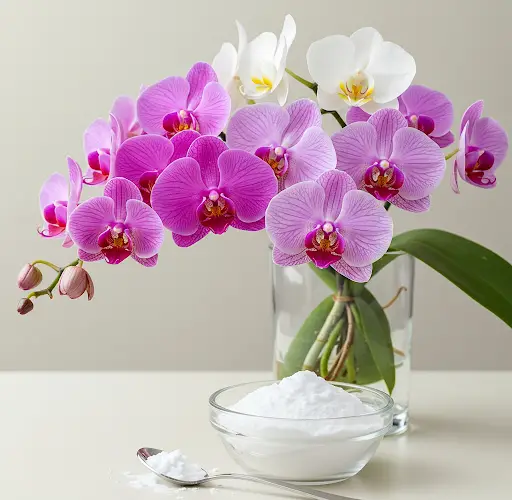How to Revive a Rotting Orchid: A Step-by-Step Guide
Orchids are delicate and beautiful plants that require careful maintenance to thrive. However, improper care, including overuse of inorganic fertilizers, can sometimes lead to root rot, causing leaves to turn yellow and the plant to weaken. If your orchid is suffering from rot, don’t rush to throw it away! With the right steps, you can revive your orchid and help it grow strong and healthy again. This guide will walk you through a simple yet highly effective method to restore your orchid to health.
Identifying the Problem
If your orchid’s leaves have turned yellow and the plant appears weak, the first thing to check is its roots. Root rot is often the result of excessive moisture, poor drainage, or fertilizer shock from an overuse of inorganic fertilizers. Rotting roots will appear dark, mushy, and may have an unpleasant odor. Healthy roots, on the other hand, should be firm and white or green.
Step 1: Removing Damaged Roots
To prevent further damage and encourage new root growth, it is essential to remove all damaged roots:
Carefully remove the orchid from its pot.
Inspect the roots thoroughly.
Use sterilized scissors or pruning shears to cut off all rotting and damaged roots.
Be sure to make clean cuts to minimize the risk of further infection.
This process prevents the rot from spreading and stimulates the orchid to produce new, healthy roots.
Step 2: Cleaning and Disinfecting the Roots
After cutting off the damaged roots, it is important to cleanse the remaining healthy roots to remove bacteria and fungi.
Rinse the roots gently with clean water to wash away debris.
Prepare a disinfecting solution by mixing 1 teaspoon of baking soda with 2 liters of water in a jar.
Soak the orchid’s roots in this solution for 10 minutes.
Baking soda has natural antibacterial properties that help eliminate harmful pathogens and prevent further rot. After soaking, remove the orchid and allow it to air dry for a few minutes before replanting.
Step 3: Repotting the Orchid with Dry Moss
For successful recovery, orchids need a well-aerated and moisture-retentive medium. Sterilized, dry moss is an excellent choice as it absorbs excess moisture while still providing adequate hydration for root development.
Take a handful of dry, sterilized moss and place it in a new, clean pot.
Position the orchid so that the remaining healthy roots are in contact with the moss.
Gently press the moss around the base of the orchid to secure it.
Avoid over-packing the moss, as orchids require airflow around their roots.
Step 4: Creating a Recovery Environment
To encourage new root growth and prevent further stress:
Place the potted orchid in a cool, shaded area with good air circulation.
Avoid direct sunlight, which can cause dehydration.
Do not water the orchid for the first week after repotting to allow the cut roots to heal and prevent further rot.
Step 5: Resuming Watering
continued on next page
ADVERTISEMENT

